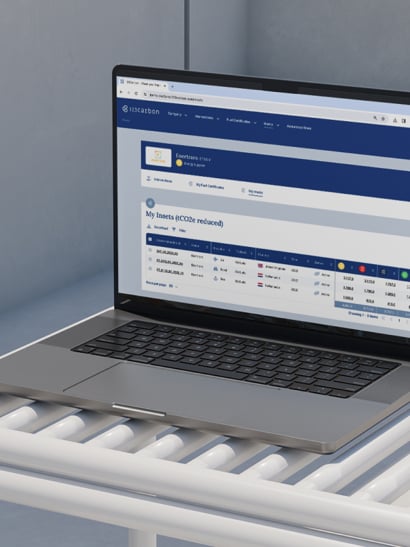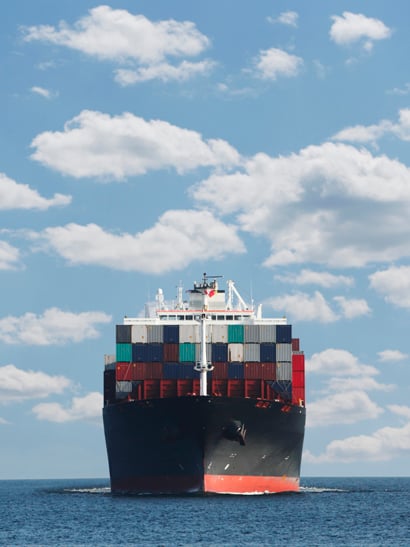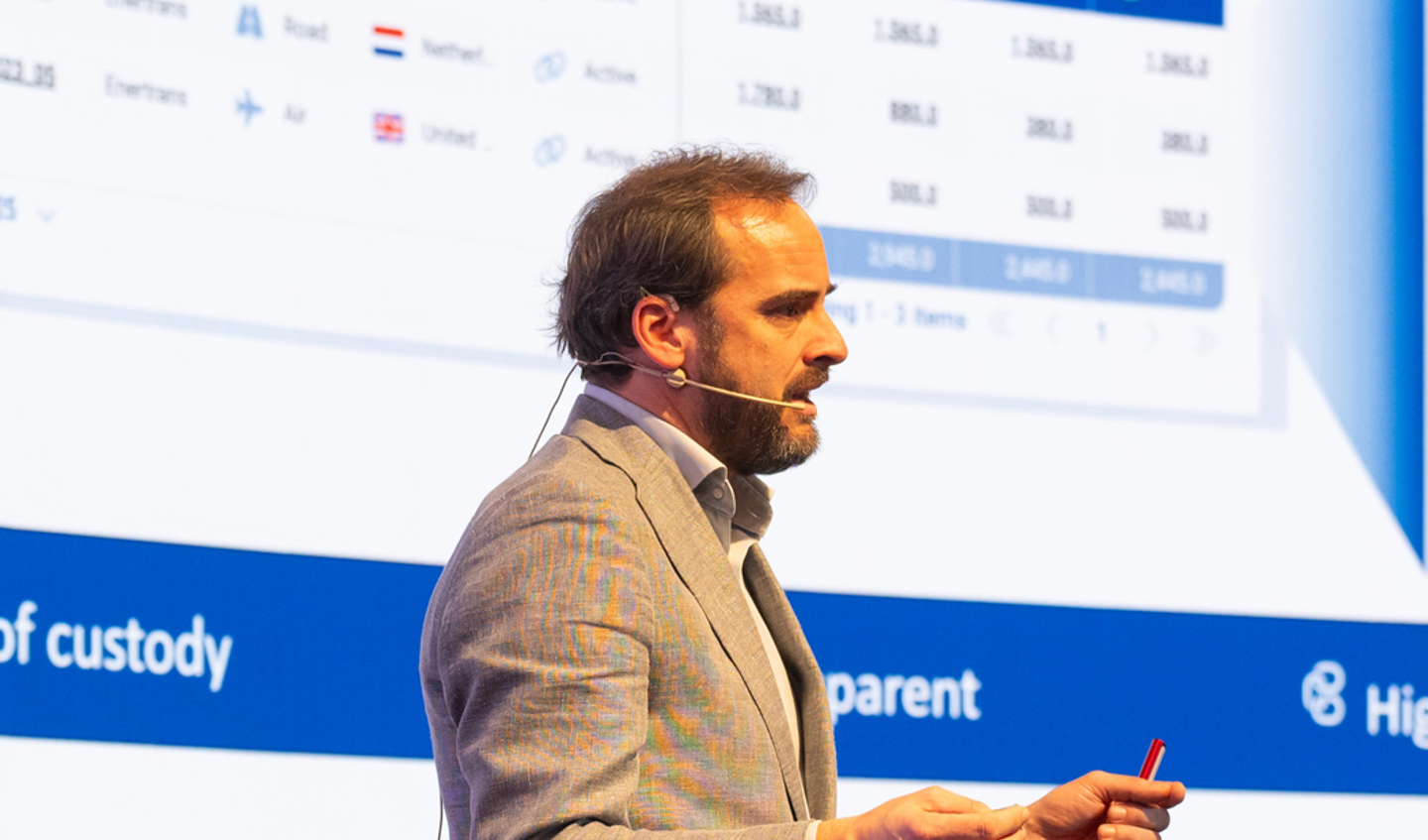Shipping stakeholders across the board are fully aware of their role in supporting the maritime industry in its efforts to address decarbonisation, but how to manage the costs involved is less easily understood.
This prompted Jeroen van Heiningen, a former sustainability consultant at Accenture, who also spent a handful of years at GoodFuels – a global supplier of sustainable fuels – to launch the world’s first independent carbon insetting platform for all the parties that make up the global freight industry supply chain.
According to van Heiningen, the 123Carbon platform, which was launched in September 2022, supports companies in recovering their decarbonisation costs by specifically allocating their carbon reductions to freight forwarders and cargo owners, who are willing to pay for the reductions.
“The carbon insetting process is based on a globally accepted book-and-claim methodology and on verified low carbon reduction measures,” he explains. “123Carbon issues blockchain-backed environmental attribute certificates (EACs) that provide complete transparency from start to finish. They are immutable, and provide the highest integrity, as a result of the company’s legal framework. Per actor in the supply chain only one certificate is issued, of which the ownership is logged into the 123Carbon registry. This avoids potential double counting. Using the registry, the certificates can be allocated to the direct customers of fleet operators or sold in the broader market.”
Broad market
Since the first participants were admitted to the programme in January 2023, more than 15 companies have signed up and are now live on the platform. They include shippers, container lines, fuel providers, and freight management companies. Enquiries have ramped up since 123Carbon won the Captain’s Table, a maritime pitch competition that LR has supported since 2019 in Hong Kong, in November 2023.
“The Hong Kong Stock Exchange was a fantastic location for us to make our pitch,” declares van Heiningen. “It’s a breeding ground for carbon insetting with a number of global liner firms across the APAC region and a strong local market too. We’re breaking new ground here.” In February 2024, 123Carbon announced its collaboration with Japanese transport company, Mitsui O.S.K Lines, Ltd (MOL), which represents the first APAC based carrier to issue carbon insets.
In fact, one carrier contacted van Heiningen immediately after the event, seeking to invest in the business. However, although this offer was appealing, van Heiningen decided not to pursue this option on the grounds that the platform should remain entirely independent.
“Now, we’re getting an average two or three requests from Fortune 500 companies every week,” he reveals. But applicants must be carefully screened and assured by Verifavia, an independent specialist in environmental accreditation, verification, certification, and auditing for sectors including aviation and maritime transport. We undertake a four-phase process with them which is extremely thorough, typically taking six weeks, it is crucial that we undertake this process in order to ensure the credibility of carbon insetting”, he says.

Insets versus offsets
Carbon insets are completely different to offsets which have been used for some years as a relatively inexpensive way for companies to compensate for their emissions. Although many projects do stand up to scrutiny, offsetting is unregulated and therefore can be open to so-called “green-washing”.
Crucially, offsetting takes place between different industrial sectors. For example, a steel producer in Europe might offset emissions by planting hundreds of trees in a deforested area of South America, for example, claiming that in doing so, it compensates for its carbon-intensive emissions at its production plants in Europe.
Carbon insetting, on the other hand, is tightly regulated and takes place between participants with interests in the same industrial supply chain. It focuses not only on the emissions that are created directly from a process, such as carbon from the funnel, but all of the indirect emissions that occur across the supply chain of a company or organisation.
Insetting, therefore, seeks to improve the carbon footprint of suppliers or customers, rather than an unrelated offsetting process and do not contribute to the decarbonisation of that specific industry. It is well-suited to applications in the maritime sector, van Heiningen says, because shipping’s supply chain has participants with common interests. And theoretically, it could provide a pathway towards a net zero global transport chain.

It’s all in the name
When van Heiningen set up 123Carbon almost two years ago, he chose the name carefully. The numbers stand for the type of emissions, Scope 1, 2, and 3. Scope 1 emissions represent the direct Greenhouse Gas (GHG) emissions resulting from the combustion of fuel by a ship, whereas scope 3 emissions represent the (indirect) emissions that need to be reported by those further down the value chain, such as forwarders and cargo owners, for instance. The 123Carbon platform ensures the correct allocation of any scope 1 reduction to the scope 3 parties, hence “123Carbon.”
There are, however, restrictions to the allocation of carbon insets throughout the supply chain. For instance, cargo owners can only reduce their sea freight emissions with insets that have been realised within a sea freight context. This “modality for modality” principle ensures that cargo owners do not use cheaper marine insets to reduce harder to abate air fright emissions. These restrictions and principles are defined by Smart Freight Centre, an NGO leading the space in decarbonising the transport sector and with close links to the GHG Protocol and the Science Based Target initiative (SBTi).
A multimodal offering
Van Heiningen attributes 123Carbon’s success so far to the fact that it is unique in being multimodal. A freight forwarder, for example, might wish to acquire insets covering emissions on sea, air, and land. Eventually, he says, insetting can lead to the entire global supply chain becoming net-zero.
There is also, he says, potential to use this technology in other sectors. “Our intellectual property, which is licensed, is also applicable to other high-emission sectors such as plastics, steel, waste,” he notes.
Having appointed a Chief Technology Officer in March 2022, van Heiningen needs more personnel following the increased level of interest. He has run the company so far based on his private investments, supported by some angel investors. Later this year, he plans to raise Series A funding to support him in servicing the increasing demand.






